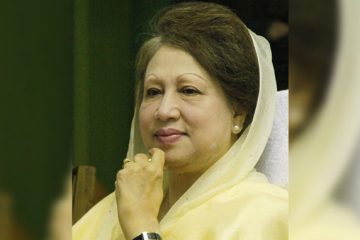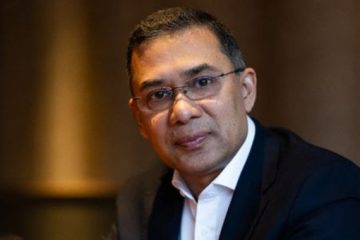Telecom regulator seizes 89,000 counterfeit phones in two days
 Shafiq Ahmed, a worker at a motor workshop in front of Mohakhali bus terminal, uses a smartphone of a renowned Taiwanese brand.
Shafiq Ahmed, a worker at a motor workshop in front of Mohakhali bus terminal, uses a smartphone of a renowned Taiwanese brand.
He said he bought the new handset for Tk4,000 only. He cares less about the brand, though.
People like Shafiq are aplenty. These counterfeit sets enter the market through illegal channels and offer substandard services.
Bangladesh Telecommunication Regulatory Commission (BTRC), the regulator, seized 83,000 such handsets at Hazrat Shahjalal International Airport on Sunday. A team of the BTRC and customs officials busted the cache.
BTRC officials said the same team also seized some 6,000 counterfeit handsets from the same spot yesterday, and 2,600 sets last month from a shop at Motalib Plaza in Hatirpul area in the capital.
Some of these handsets resemble some top brands, including Nokia, HTC and Sony-Ericsson. But they do not carry their logos and some of them are without any display glass.
The BTRC has got some samples of the sets at its office.
Display glasses or the logos of the handsets are imported separately and are assembled locally before putting the handsets on display, said the BTRC officials.
The officials said unscrupulous importers put the logos and display glasses on the counterfeit handsets and market those as original.
However, these importers take permission from the BTRC showing documents meant for legal imports, said an official, adding that they also take toll on the genuine importers.
BTRC Chairman Zia Ahmed said the commission has decided to suspend the licences and no objection certificates of these alleged importers.
The watchdog sat with the customs officials recently and launched the drives, Ahmed said.
He also said the regulator is working to publish a guideline on IMEI (international mobile equipment identity) so that no counterfeit sets (without proper IMEI number) are used in the country.
The BTRC officials said the spurious handsets do not have any IMEI number, which is provided by GSM Association, an international body, in exchange of a certain amount of fee.
The IMEI number is useful for retrieving a stolen handset. By barring the IMEI number, a stolen phone set can be detected and disabled. The number can be found under the battery of a set.
Anybody can perform unlawful acts by using fake handsets. A SIM (subscriber identity module) is traceable, but not the handset or the person involved. In some countries, the regulators register the IMEI numbers to rein in criminal offences.
The importers of counterfeit handsets also evade taxes and do transactions through unauthorised channels, according to the BTRC officials.
Last year a law enforcing agency was searching for a certain number. They got 117 handsets with the same IMEI number; one set was real and the rest fake. Ahmed of the BTRC said an interim directive will be given to the telecom operators to deactive the connections of the counterfeit handsets phase by phase.
However, an official of a mobile operator said, at least two crore handsets will become inactive if the directive comes into force.
Initially it would create problems for the users, but the operators will get time to renumber the sets properly, Ahmed said.
Another official of the BTRC said all the telecom operators will be connected with an equipment identification registrar (EIR) server, which will identify any false IMEI number.
Ahmed said: “This is not the BTRC’s responsibility alone to stop importing fake handsets. All the stakeholders, including operators, manufacturers and law enforcement agencies, should come forward.”
Courtesy of The Daily Star




















